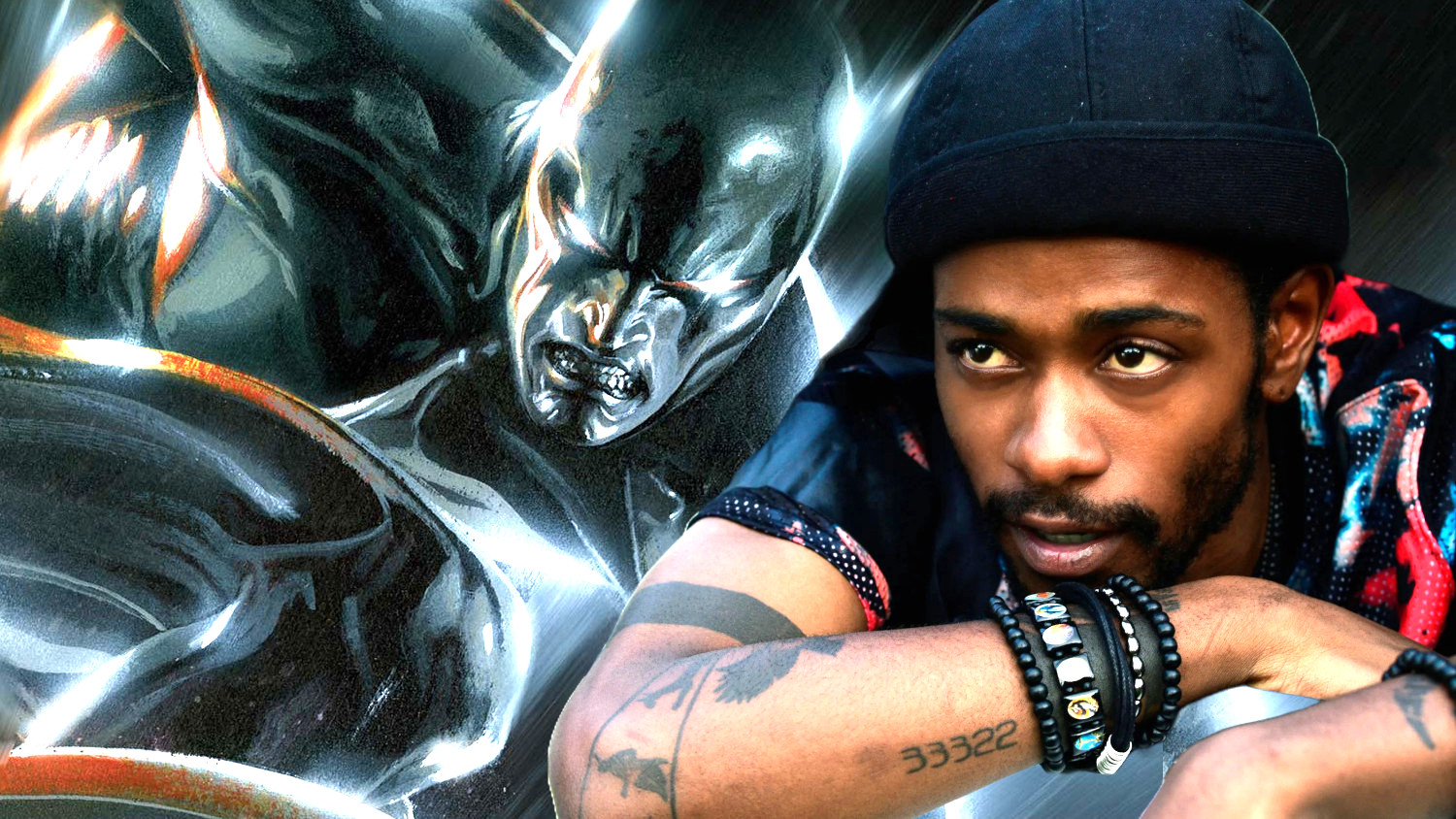Alien Attack Films Are Fun
A Film Review of Battle: Los Angeles
By: Lawrence Napoli
The creative team behind Battle: Los Angeles ought to be applauded for its forward thinking in that they have taken a summer blockbuster film and rolled the dice on an early spring release so as to avoid butting heads with the “Summer of Marvel” and Harry Potter. “Alien Attack Films” have all but become a sub-genre in between sci-fi and action and with a decent budget, is a relative instant success at the box office. Yes, I realize that Skyline hasn’t even been released on video yet and that film was quite atrocious. I request that you, the reader, reference my Skyline review to appreciate the experimental aspect of that entire production which basically attempted to deliver blockbuster quality with a bargain basement, budget. Rest assured, Battle: LA is a very satisfying adventure with believable performances, decent effects and respectable CG. If this is true, one may ask: “Why not hold off for the summer and those loose summer wallets?” Two reasons: 1) There is no competition at the box office now and 2) This film is as formulaic as it comes and features no real surprises to catalyze a second wave of big ticket sales that would inevitably spill over into another blockbuster’s opening weekend. This is not a great film. This is a good film being released at a great time.
This film features yet another relative novice in the field of screenwriting. I can imagine Christopher Bertolini pitching his script as “Hurt Locker, but instead of insurgents, you’re fighting aliens.” You know, I could end the review right here (because this is quite an accurate way to sum the film up), but that really does the production a severe discredit. If an alien force were to invade the Earth, humanity’s survival would be in the hands of every country’s military and the manner in which Earth’s defense would be facilitated on land would look very much like Battle: LA. Bertolini chooses to have the plot follow one single platoon’s mission to rescue civilians that are trapped in the middle of the red zone. The obvious weakness to this approach is that the viewer does not get any story from the global perspective with the exception of the television and radio reports that the platoon itself happens upon. The idea of this script was to establish isolation on a battlefield that involved tens of thousands of units and how one single unit must employ unconventional tactics while communication is nil in order to accomplish their mission and survive doing it. The truth is not every land unit has air support, back up, or a supply depot around every corner. After a platoon gears up and is dropped into “the sh*t,” they are really on their own and the script does a very good job at conveying this. As a result of the platoon needing to keep moving, the pace of the film is relatively high with very few breaks in the action. The dialogue is written with the appropriate military terminology blended with enough good old fashioned, American vulgarity to express varying degrees of morale within the platoon. The only part of the story that I had a particular problem with is the fact that the aliens use projectile based weapons. Yes, that means bullets and rockets which make as much sense as Kirk and Spock beaming down and drawing their bows and arrows to stare down some Klingons. The script conveniently ignores this and rightly so because there is no appropriate explanation for it.
The business aspect of this production was a bit confounding to me. Imdb.com states that most of this film was actually shot in Louisiana due to the allure of big tax incentives. So that means that if this movie had been set up in a larger metropolitan area (like LA), it is quite conceivable that this film’s budget would have swelled well beyond the estimated $100 million dollar mark; perhaps even double it. Wait a minute! $100 million dollars? For Battle: LA? Executive producer David Greenblatt did not get his money’s worth because Battle: LA does not look like a $100 million dollar film. Of course with inflation who knows how much that kind of cash actually gets you production-wise, but historically that range of investment at least delivers a higher grade of cast as opposed to the single alpha that signed on for this film. I can only presume that this production was accosted with several unexpected overhead costs that were associated with access to military paraphernalia and training or just plain and simple stupidity when it came to spending in general because Battle: LA looks like a blockbuster on a stricter budget. Inception’s budget was only $60 million dollars more and that shot all over the world and built fortresses on snowy mountains in addition to mammoth centrifuges for crazy practical effects. CG work, depending on the scope of the visuals one wishes to produce, can be a more cost effective means of getting the shot. That being said, outside of the human/alien aircraft and alien land forces, almost everything was done practically (by that I mean, non-CG & green screen) and with that kind of stunt work and the insurance premiums associated with it, cost goes WAY up!
It looks like the lion’s share of production bucks went to visual effects seeing how this production was working with Shade VFX, Hydraulx, Cinesite, Matte World Digital, Intelligent Creatures, SPIN VFX, AXISvfx, Luma Pictures and Embassy Visual Effects. That is an awful lot of hands in the cookie jar and for all the creative minds behind these companies, their combined efforts did NOT yield visual effects that were on par with ID4, one of the gold standards for this genre shot 15 years ago. On top of the overspending it more than likely took to produce the fabricated imagery, the powers that be made a bad situation worse by mucking up those visuals with hand held camera work, or adding some kind of hand held, rendered effects to play up the realism (or cover up sub standard work). The same kind of tactic was used in Iron Man 2’s climactic battle sequence last year. At no one point does the audience get a true appreciation for the invading alien force en masse or as individuals because the camera doesn’t permit it or the aliens are moving too quickly in and out of cover within the frame. The only thing I could gather from the alien tech is that it isn’t particularly aerodynamic, mechanical and modular. The only thing I know about the alien troops is that their weapons are grafted to their arms and I wasn’t SHOWN that, I was told so by the actors. Again, I point to shoddy production leadership for allowing this result having spent X amount of dollars to produce visual effects that happen to be the impetus for the entire story.
I will not waste the reader’s time commenting on names like Bridget Moynahan and Michelle Rodriguez in regards to their performances because both roles could have been fulfilled effectively by unknowns. The only real acting performance was delivered by Aaron Eckhart who plays Staff Sergeant Michael Nantz, a Marine who is rugged and experienced, but has become burned out and disheartened by the loss of men under his command in battle. Perhaps it isn’t even fair to laud Eckhart for his efforts because the script only gives this character an opportunity to shine despite giving brief moments to several men of the platoon as individuals prior to hell breaking loose on the planet. What’s great about Eckhart as an actor is that you can always count on a high level of intensity in demeanor, expression and vocal intonation for scenes that demand high drama, danger or action. Battle: LA is no exception to his well established reputation. Playing the role of a leader who doesn’t want to lead and whose men reviles the notion of him as their leader has been done and is almost expected in this type of war meets sci-fi film. What isn’t a given, is the ability for the actor to succeed in this endeavor, which Eckhart has no problem doing in this film. The rest of the ensemble produces a satisfactory performance as a collective of humans under extreme duress. Yes there are a few moments of comedic cliché, but are sometimes necessary to break up the action and intensity. I remind the reader that this is the result of a deficiency from the writing perspective and although great actors can turn garbled text into gold, great actors are usually not cast in the ensemble.
Having proof read this review; I am a bit surprised that it is as negative as it reads because I really enjoyed Battle: LA as an overall experience. Perhaps I have simply been starved for a decent alien attack film for too long? This film is by no means a revolution in the way sci-fi meets war, but it makes a very satisfactory attempt to do so. Whenever UFOs are involved, the audience is expecting all manner of aerial chaos and destruction that it is easy to forget that any conflict would, in fact, be occurring on the ground. This is a film that is highly influenced by US policy of military occupation and counter-insurgency in Iraq. It lends more credence to the danger and isolation of the urban combat situation in addition to emphasizing that wars (especially today in Iraq and Afghanistan) are still won on the ground and not in the air. I took all of this from Battle: LA which does a great job of getting the viewer knee deep into said danger and isolation to the extent that one truly feels like another member of the platoon. This sentiment overpowers all other criticism of lost potential, failed execution and questionable decision making. Battle: LA is a solid film and it deserves a viewing by most.

![[page_title]](https://cosmicbook.news/wp-content/uploads/2022/08/cosmic-book-news-default-featured-image.webp)




